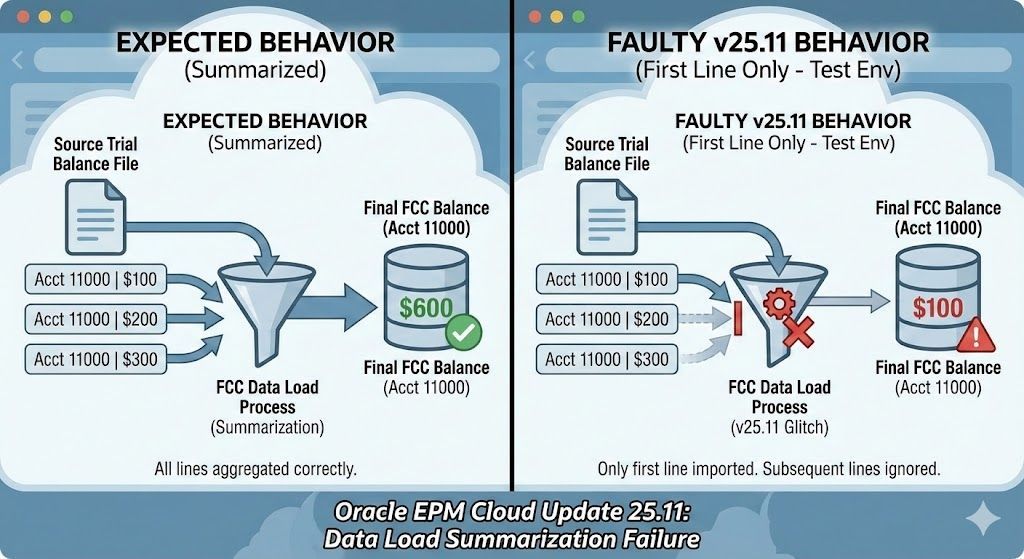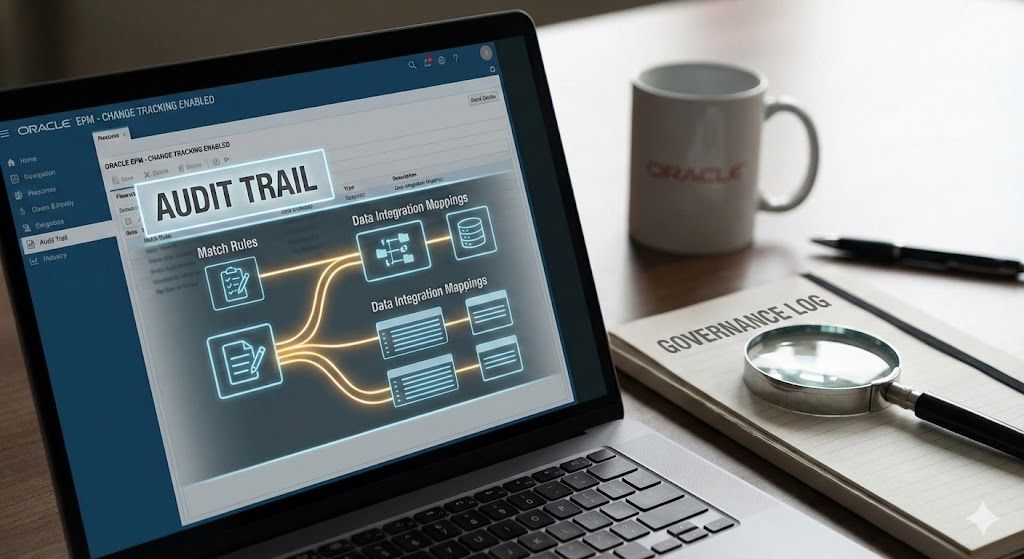Future-Proof Your EPM Reporting: Why Migrating from Financial Reports to Reports is a Smart Move
Nadia Lodroman • 25 May 2025
Listen to Tresora and Ledgeron's chatting about this blog post:
Migrating to Reports in Oracle EPM is a Strategic Imperative
As Oracle EPM administrators and users, we're constantly navigating the evolution of the EPM Cloud platform. Oracle continues to innovate, delivering more powerful, integrated, and user-friendly solutions. One key area undergoing significant enhancement is reporting. If your organization still relies heavily on traditional "Financial Reports" (often built with Financial Reporting Studio or its web counterpart), it's time to strategically consider migrating to the modern "Reports" infrastructure within Oracle EPM Cloud. This isn't just about adopting new technology; it's about future-proofing your financial and management reporting capabilities.
The Writing on the Wall: Oracle's Strategic Direction
Oracle's focus is firmly on its cloud-native solutions, and this is evident in the continuous development and enhancement of the "Reports" framework across the EPM Cloud suite. While traditional Financial Reporting has served us well, the newer "Reports" (sometimes referred to as Management Reporting or found under the "Reports" card in your EPM Cloud environment) is Oracle's strategic, next-generation solution.
We've seen a similar pattern with other EPM Cloud components. For instance, Oracle announced the de-support of Cloud EPM Forms 1.0 and Dashboards 1.0 effective June 2025 (25.06 release), encouraging users to transition to Forms 2.0 and Dashboards 2.0. This move underscores Oracle's commitment to advancing its platform with more robust and feature-rich tools. While a similar de-support announcement for all traditional Financial Reporting capabilities across all EPM modules might not be immediate, the direction is clear: "Reports" is the future.
It's important to note a recent update from Oracle: Financial Reporting (FR), along with its related user interfaces and features, will NOT be removed in June 2025.
FR will remain a part of the Cloud EPM Platform business processes for the time being.
However, as of June 2025, Oracle will discontinue bug fixes and enhancements in FR for all Cloud EPM Platform business processes, except for Tax Reporting and NetSuite Planning and Budgeting, which have a current dependency on seeded FR reports.
So, Why Make the Strategic Switch from Financial Reporting to Reports?
Even without an imminent cut-off date, migrating to "Reports" within your Oracle EPM Cloud environment offers significant advantages:
- Modernised User Experience & Enhanced Design: "Reports" offers a significantly more intuitive and contemporary interface for report development. This translates to an easier learning curve and faster report creation. The platform provides an ad-hoc-like build ability, often consolidating tasks onto a single screen for a more streamlined and efficient workflow. You'll also benefit from improved design features like grid titles and row banding for creating more polished and professional-looking outputs.
- Superior Charting and Visualisation: In an era where data visualisation is key to understanding complex information, "Reports" significantly outshines FR. Users can leverage a much wider array of chart types, including stacked charts, combination charts, polar, radar, and scatter charts. This allows for more dynamic, insightful, and impactful data representation.
- Improved Point of View (POV) Control and Functionality: "Reports" provides enhanced control and grouping capabilities for POVs, simplifying how users interact with and analyze specific data slices. Features such as ad-hoc zooming into parent members directly when previewing reports offer greater flexibility and quicker insights. Users also benefit from selectable alias tables and smoother HTML report scrolling, leading to a more fluid user experience.
- Streamlined Books and Bursting: The process for creating and distributing report books and utilising bursting capabilities has been refined and improved in "Reports." Expect enhancements such as the ability to burst multiple output files (e.g., PDFs) into a single email for a recipient, potentially even as a consolidated ZIP file. This improves the experience for end-users by reducing clutter and simplifying access to information.
- Aligning with Oracle's Strategic Direction & Future-Proofing: "Reports" is the focal point of Oracle's development efforts for embedded EPM reporting. By migrating, you align your organization with Oracle's strategic roadmap. This ensures you will benefit from ongoing enhancements, innovative new features, and continued robust support. While FR will remain for now, future innovations will be centered on "Reports."
- Simplified Migration Path: Oracle provides tools to facilitate the transition from FR to "Reports." These utilities allow for the migration of existing FR reports, either individually or through a "Migrate All" feature. While some manual adjustments and validation will likely be necessary due to the inherent differences and advancements in "Reports," the process is designed to minimise disruption.
What About Your Existing Financial Reports?
The good news is that Oracle provides pathways for migration. For example, the Oracle EPRCS Admin Guide 2025 details migrating Financial Reporting documents from on-premise Oracle Hyperion Financial Reporting to "Reports" in Narrative Reporting. Similar migration utilities and best practices are often available for moving FRS reports within other EPM Cloud business processes to their respective "Reports" frameworks.
This migration also presents an excellent opportunity to:
- Rationalise your reports: Review and retire outdated or redundant reports.
- Optimise report designs: Leverage the new features in "Reports" to improve the layout, performance, and analytical capabilities of your existing reports.
- Standardise reporting practices: Ensure consistency across your newly migrated reports.
Getting Started with Migration
Embarking on a migration project requires planning. Here are a few initial steps to consider:
- Assess Your Current State: Inventory your existing Financial Reports. Identify their complexity, data sources, usage frequency, and business criticality.
- Develop a Migration Plan: Prioritise reports for migration. Consider a phased approach, starting with less complex or high-impact reports.
- Familiarise Yourself with "Reports": Train your team on the new "Reports" designer and its capabilities.
- Leverage Oracle Resources: Consult Oracle documentation, support, and potentially Oracle Consulting Services or a trusted partner for guidance and best practices.
- Test Thoroughly: Ensure that migrated reports are accurate, perform well, and meet business requirements.
Conclusion: Embrace the Future of EPM Reporting
Migrating from traditional Financial Reports to the modern "Reports" framework within Oracle EPM Cloud is a strategic imperative. The benefits in terms of enhanced functionality, improved performance, cloud-native advantages, and alignment with Oracle's roadmap make a compelling case. By proactively planning and executing this transition, you can empower your organization with a more robust, agile, and future-proof reporting solution, ready to meet the evolving demands of your business.
Don't wait for your reporting tools to become a bottleneck. Start planning your migration to "Reports" today and unlock the full potential of your Oracle EPM Cloud investment.






